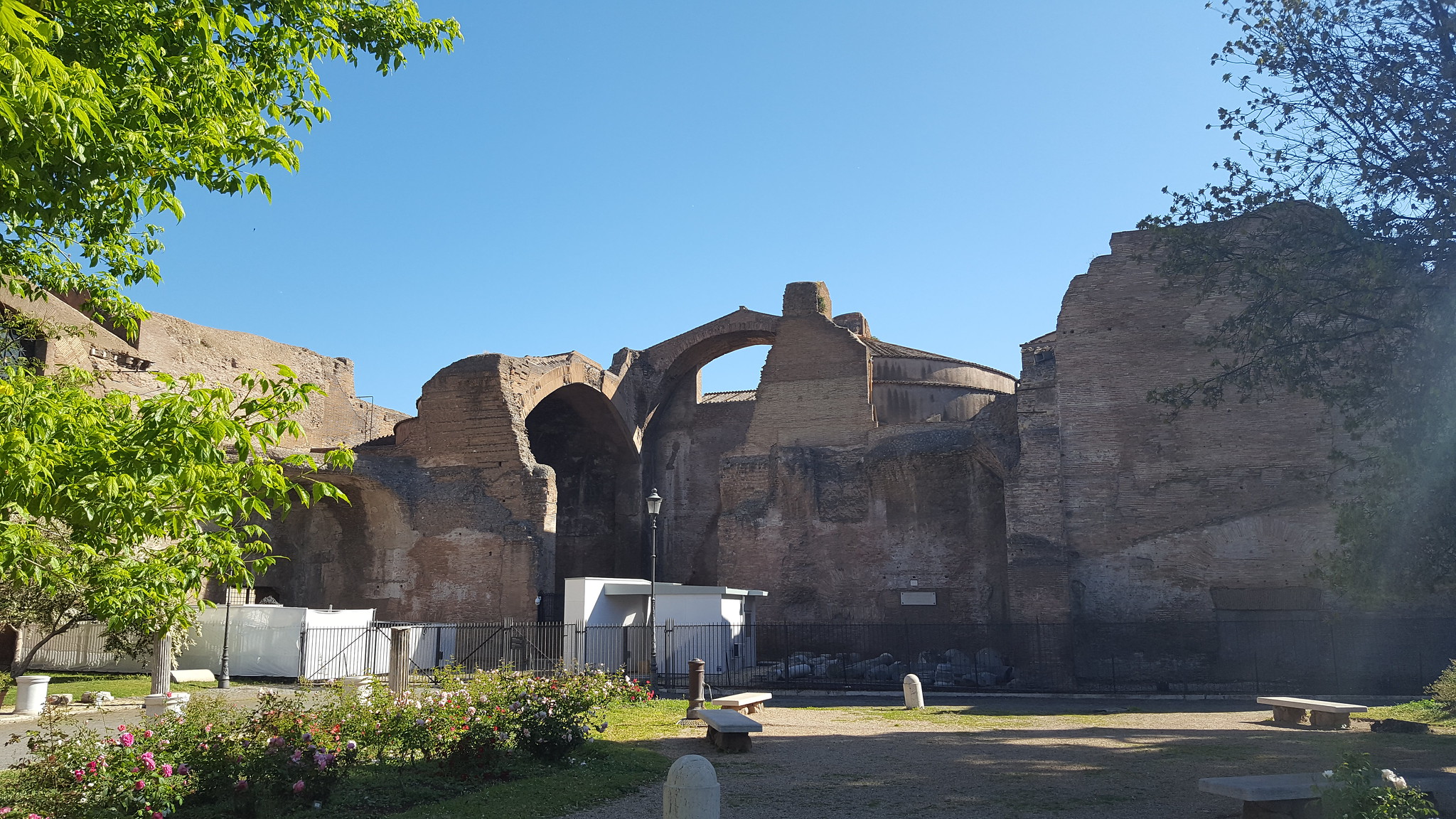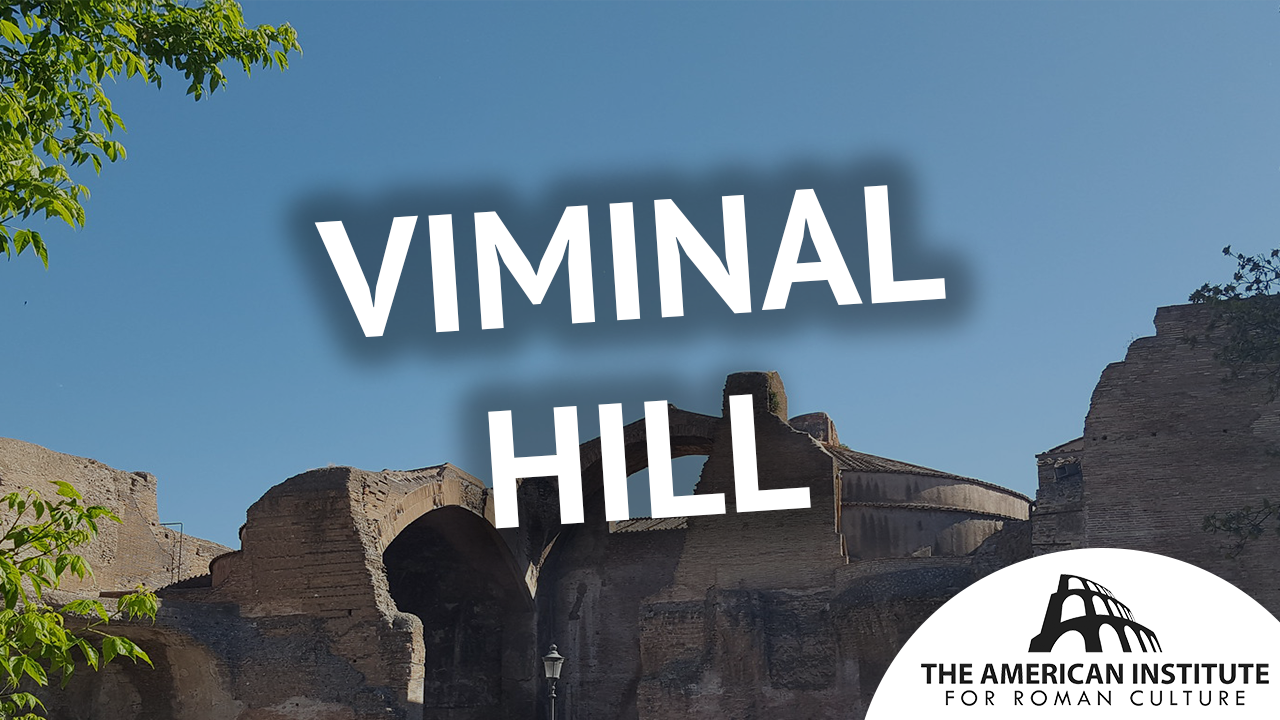The Viminal Hill is the smallest of the seven hills of Rome. It is located between the Esquiline and the Quirinal, and it stretches from the area of Termini Station, down the Via Nazionale and reaches the Forum of Augustus. The name Viminal is believed to have its origin in the Willow trees, called Salix Viminalis, which grew abundantly on the hill. Alternatively, the name could have been inspired by the temple of Jupiter Viminus which was located in the region.
Unlike its neighbor hill, the Quirinale, there are no archeological traces of settlements of the Sabine tribe in the Viminal. Ruins of ancient temples of importance have not been found either. However, the Viminal Hill houses an impressive bath complex. The Baths of Diocletian, located right next to the Termini Station and the Piazza della Republica, was one of the first public bath complexes of Ancient Rome and the largest of the Imperial Baths. It was inaugurated in the early years of the 4th century AD and the water was supplied by the aqueduct Aqua Marcia.
During the Renaissance, parts of the still-standing foundations of the Bath of Diocletian were converted into a Christian church. The one responsible for this project was Michelangelo, and nowadays the Basilica of Saint Mary of the Angels and Martyrs is still open for visitors and famous for its unique architecture that implements the characteristics of the ancient ruins. Adjacent to the Basilica, the other parts of the Baths house one of the branches of the Roman National Museum.
Due to the urbanization of the city center, the Viminal Hill is almost unnoticeable. Visiting the Basilica of San Vitale, in the Via Nazionale, one can have an idea of the difference between the modern ground level and the ancient ground level, and all the centuries of topographical transformation involved. The Viminal has always been a largely residential area, and some ancient roads and vias that were essential for urban mobility are still in use today. They are the Via Urbana, ancient Vicus Patricius, that marks the edge between the Viminal and the Esquiline; and the Via Leonina and Via Madonna dei Monti, previously known together as Argiletum, the road that connected the Viminal hill to the center of the Roman Forum.
Nowadays, other important constructions on the Viminal Hill include the Opera Theater, the Piazza della Reppublica with the beautiful Fountain of the Naiads by Alessandro Guerrieri, and the Palazzo delle Esposizione, museum and cultural center, located right next to the Basilica of San Vitale.
References
- https://rome.us/hills/viminal.html
- Purcell, Nicholas. “R. Krautheimer, Rome: Profile of a City, 312–1308. Princeton: University Press, 1980. Pp. Xvi 389, 260
- Illus.” The Journal of Roman Studies 73 (1983): 210–11. – https://doi.org/10.2307/300091
- Wilson, R. J. A. “L. Richardson, Jr., A New Topographical Dictionary of Ancient Rome. Baltimore and London: Johns Hopkins University Press, 1992. – https://doi.org/10.2307/301066
VIMINALIS COLLIS, the smallest of the traditional seven hills of Rome, extending south-west from the Esquiline plateau. It is separated from the Cispius on the south-east by the valley traversed by the VICUS PATRICIUS (q.v.), and from the Quirinal on the north-west by the low ground now marked by the line of the Via Nazionale.
Read more:
Like the Quirinal it is a tongue of land about 700 metres long, with a present area of approximately 24 ha. and a height of 50-57 metres. Originally its height was somewhat greater (BC 1891, 317). This hill derived its name from the osiers (vimina) that grew there (Varro, LL v. 5 ; Fest. 376; Iuv. iii. 71; cf. IUPPITER VIMINALIS), and it was regularly called collis, not mons, and those who lived there collini, not montani (for an apparent exception, see Eutrop. i. 7 (6); CP 1907, 463-464). It became part of the City of the Four Regions (cf. QUATTUOR REGIONES), making with the Quirinal the third, Regio Collina. When the Servian wall was built, the Viminal seems to have been regarded as reaching across the plateau as far as the line of the wall and the PORTA VIMINALIS(q.v.). Later this district was included in the sixth region of Augustus. The Viminal was always the least important of the hills of the city, and contained few monuments, and traffic for the most part passed on either side of it. (For topography and monuments in detail, see HJ 372-393; Pl. 484-506).
This content is brought to you by The American Institute for Roman Culture, a 501(C)3 US Non-Profit Organization.
Please support our mission to aid learning and understanding of ancient Rome through free-to-access content by donating today.
Cite This Page
Cite this page as: Darius Arya, The American Institute for Roman Culture, “Viminalis Collis (Viminal Hill)” Ancient Rome Live. Last modified 07/03/2020. https://ancientromelive.org/viminalis-mons-viminal-hill/
License
Created by The American Institute of Roman Culture, published on 07/03/2020 under the following license: Creative Commons: Attribution-NonCommercial-ShareAlike. This license lets others remix, tweak, and build upon this content non-commercially, as long as they credit the author and license their new creations under the identical terms. Please note that content linked from this page may have different licensing terms.




